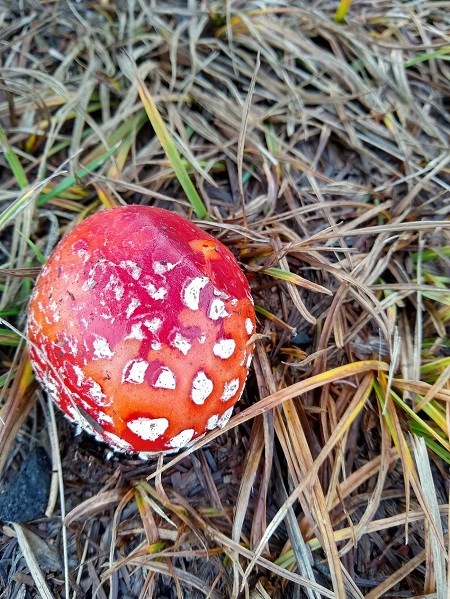
NPS photo While foresters in the West try to stop the work of parasitic mushrooms like the honey mushroom (Armillera mellea) from killing trees, national parks like Olympic are natural laboratories where complex ecological dramas play out. As an indicator of the area’s diversity, mycologist (mushroom scientist) Tom Volk came to Olympic National Park and uncovered a new species of honey mushroom, Armilleria nabsnona. Mycologists have discovered that honey mushroom mycelium (a mushroom’s perennial underground root-like structure) in the Malheur National Forest in Oregon is the world’s largest living organism. Countless natural disturbances kill and down trees, including: mushrooms, wind, seismic events, fire and floods. If not for the saprophytic mushrooms that decompose these dead trees, park forests would be piled deep with downed trees. Saprophytic fungi break down trees as their mycelium burrows inside of to consume the tree’s cellulose and lignin. Common saprophytic fungi like the red-belted conk (Fomitopsis mounceae), the striking chicken of the woods (Laetiporus conifericola) and the delicate angel wing (Pleurocybella porrigens) recycle necessary nutrients back into the forest floor. Imagine now that a honey mushroom has killed a tree and chicken of the woods and angel wings have decomposed the tree, helping new saplings emerge. These young trees survive through the help of mutually beneficial mycorrhizal relationships with mushrooms like the fly agaric (Amanita muscaria) and the king bolete (Boletus edulis). Mycorrhizal mushrooms fashion a net that covers their host trees’ fine root tips, allowing each to share nutrients. Trees share the material of life, carbon, with mushrooms while mushrooms provide phosphorus and nitrogen, the nutrients trees need to thrive. Mycologists are discovering how mycorrhizal mushrooms don’t just connect with trees, they form common mycorrhizal networks with other plants as well, connecting the forest. Mycologist Paul Stamets calls these complex underground relationships the “wood wide web.” There are few better places in the world to observe mushrooms’ complex interactions than Olympic National Park. The park harbors at least 1400 different species of fungi! Though it makes up only 2% of the state of Washington’s territory, it accounts for at least 56% of its mushroom diversity! Many factors support this amazing profusion of mushrooms in the park: 1) tree diversity of nearly two dozen species 2) elevations ranging from sea level to 7890 ft that helps produce 14 feet of rain in the park’s rain forests and less than 2 feet of rain annually in the eastern rain shadow, 3) the Strait of Juan de Fuca and the Pacific Ocean that help moderate air temperatures and bring moisture, 4) a variety of soils and 5) park management that allows for natural disturbances and limits human-driven ones. While you can find mushrooms nearly year-round in the park, the peak season occurs after the start of fall rains up until the first major frosts. You can legally collect one quart per person, per day of mushrooms in Olympic National Park. If you’re collecting for the table, always be cautious as many fatally poisonous mushrooms like the funeral bell (Galerina marginata) call Olympic Nation Park home. Remember the old forager’s adage: “There are bold mushroom hunters and old mushroom hunters, but there are no old, bold mushroom hunters.” Better to merely enjoy the stunning beauty and diversity of the park’s mushrooms. |
Last updated: March 28, 2025
